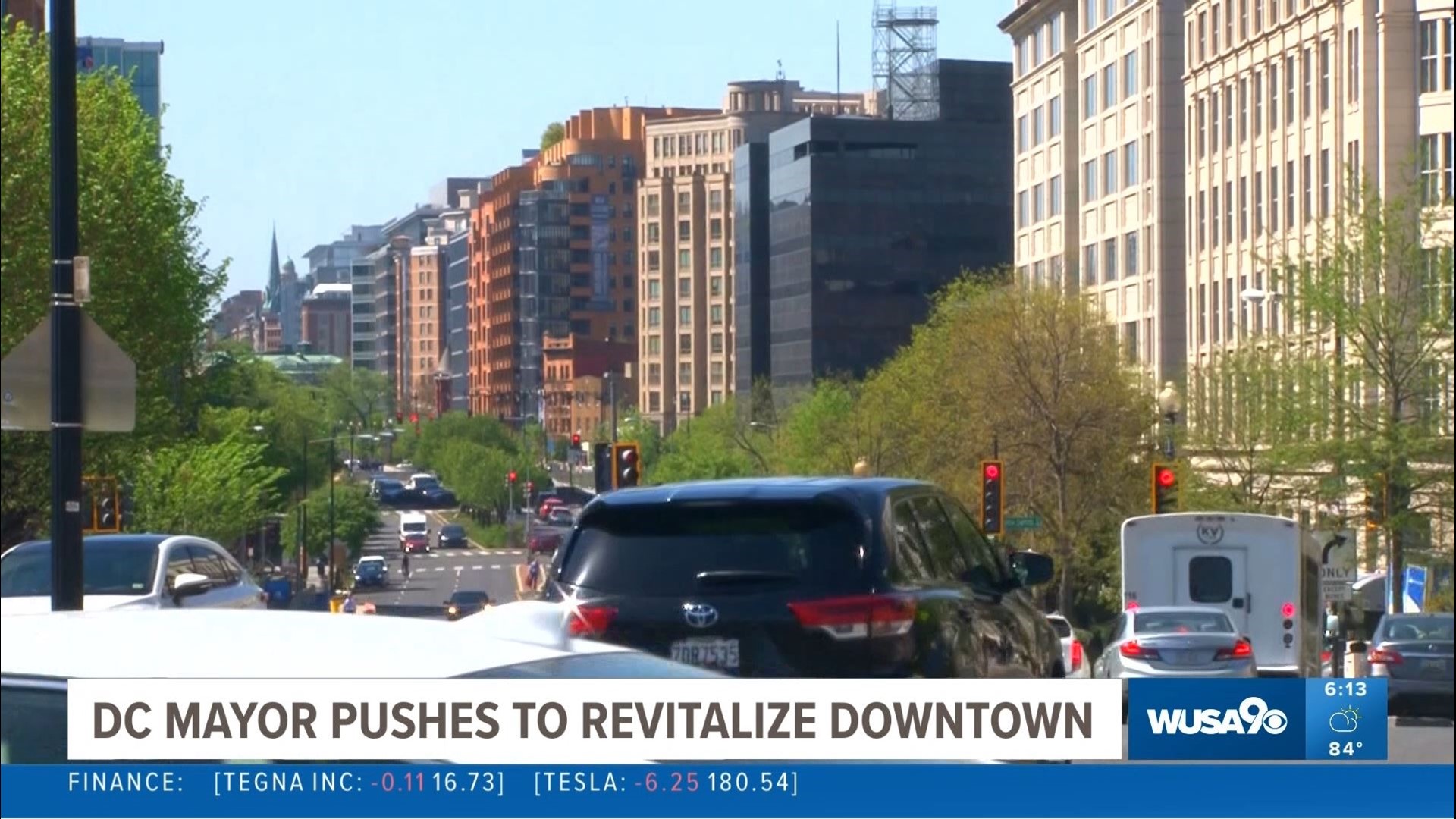WASHINGTON — D.C. Mayor Muriel Bowser unveiled more of her vision to revitalize downtown on Wednesday after many workers left during the early stages of the pandemic.
Bowser discussed the central business district’s future during a ceremony at Union Station to kick off “Jazz in Bloom”, a free music series at the transit hub.
The mayor said the series and similar events aim to attract people back downtown.
“We will get the vibrancy that we miss in some places back with a partnership with music and entertainment and our downtown business community,” she said.
The mayor included several ideas in her latest budget proposal to help revitalize the downtown area.
She wants to spend $3 million on enhancements for DC’s Great Streets and Small Business Fund, $9.8 million for improvements at Farragut Square, and increasing the available Housing in Downtown abatement from $6.8 million to $41 million in the fiscal year 2028, among other things.
Another initiative, already funded, consists of a $7.5 million grant program to support the creation of new family-friendly attractions downtown.
"We are looking for new permanent or semi-permanent attractions that will drive foot traffic,” said Keith Anderson, Interim Deputy Mayor for Planning and Economic Development.
Bowser said all the initiatives are part of a three-pronged approach to “fill the space, change the space, and bring the people” to the District’s downtown.
“We’re focused on how our spaces in downtown might have to change,” she said.
The mayor previously expressed support for attracting an additional 15,000 residents to downtown over the next five years.
However, Savills, a tenant representation firm for offices in downtown D.C. and the nearby suburbs, says it will be a challenge to create new housing there as many existing office buildings cannot be converted.
“If you think about a hotel, you walk down a corridor and there's units on either side,” said Ben Plaisted, executive vice president and co-regional manager of Savills’ Washington, DC office. “That corridor is generally what we would call a ‘narrow footprint’.”
But, Plaisted said many buildings downtown have much larger footprints.
“Those large floor plates do not translate well into a residential development,” he said.
He said “mid-block” buildings, which can frequently be seen on K St. NW, can present problems for conversions too.
"They have buildings on either side and a mid-block building is also challenging because they have less windows,” Plaisted said. “So, the units that you're offering, either they have a lower value or they're harder to get rid of because there's not so much natural light."
He added when you factor in rising interest rates, inflation, and tight financial markets, conversions can be costly too.
However, some building owners in D.C. have still inquired about converting their buildings to residential.
"In the past 6 months, there's eight to 10 buildings that are proposed or under construction to be converted to residential,” Plaisted said.

